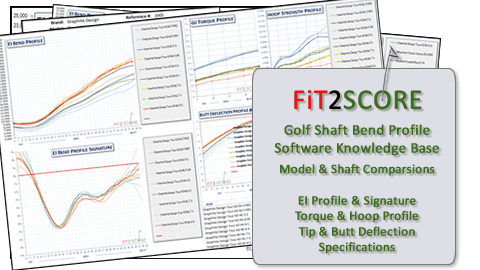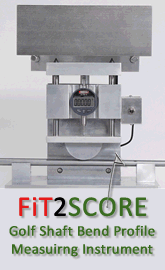NIPPON N.S.PRO MODUS3 120 & MODUS3 130 Golf Shaft Review

Sergio Garcia took his first major title playing the Modus3 130 X in his irons. Unlike carbon fiber shafts which change every few years, steel shafts remain available for a long time. They do not get replaced every other year with a new model. New models get added, but the successful designs stay on the market for years. This review of the Modus3 Tour 120 and Modus3 Tour 130 was first published in 2013. I updated it with charts from the current measuring standards. I have fit countless golfers into the Modus2 120. Recently, I was given a head only account by Mizuno and added the 120 and 130 to my fitting cart. I can now fit a shaft I know well, economically, into Mizuno heads. Within days of adding it to my Mizuno cart it is a winner it producing tight dispersion patterns.
After several years of PGA tour testing, the Nippon N.S.Pro MODUS3 was made available to the golfing public in 2010. In 2013, a second version was moved from the tour to the public. There are some unique properties to these designs. One of which is the use of a spring steel alloy. Rather than me tell the story, Here is a video I shot early in my video journalism days that tells the Nippon N.S.Pro Modus3 story. Lee Oyer, the PGA Tour Representative for Nippon is one of the great fitters in golf. His fitting skills are praised by his fellow tour fitters.
The Modus3 profile shows a quick loss of stiffness near the butt and a long stiff tip. It is made from a different grade of steel. It is in the bags of several PGA tour pros and has accumulated a lot of wins since it was first introduced in 2010. It is light, installed weight is around 104 grams. This is where the game is headed and Nippon has developed light weight high performance shafts using materials from their parent companies automotive experience. Here is a look at the linear and radial profiles of the original N.S.Pro Modus3 Tour 120 and the N.S.Pro Modus3 Tour 130 introduced to the public in 2013.
The technical discussion, measurements and testing results are available only to registered readers
At the 2013 PGA Merchandise Show Demo day, DevotedGolfer.tv editor
John Taylor discussed the Modus3 with Hiro Fukuda of NHK Intex Corporation/Nippon Shafts.
In this interview Hiro Fukuda mentions control of wall thickness to shape the stiffness profile of the shafts. This illustration from the Nippon 2013 product catalog illustrates what he is talking about.  In a uniform material, steel being a uniform material as opposed to carbon fiber, wall thickness and shaft diameter create the bend profile of the golf shaft. By looking at these images and comparing them to the EI profiles, you can see how wall shape translates to bend profile. Those of us that are affiliated with the Fit2Score EI profile knowledge base like to see manufacturers using EI profiles to explain shafts in their publications. It validates our system when our graphic images closely match those created by the shaft company engineers.
In a uniform material, steel being a uniform material as opposed to carbon fiber, wall thickness and shaft diameter create the bend profile of the golf shaft. By looking at these images and comparing them to the EI profiles, you can see how wall shape translates to bend profile. Those of us that are affiliated with the Fit2Score EI profile knowledge base like to see manufacturers using EI profiles to explain shafts in their publications. It validates our system when our graphic images closely match those created by the shaft company engineers.
To continue reading this section of the review, you must be registered at a higher level membership.
Russ
 The Highlands Performance Golf Center, Carrollton Texas
The Highlands Performance Golf Center, Carrollton Texas ![]()







